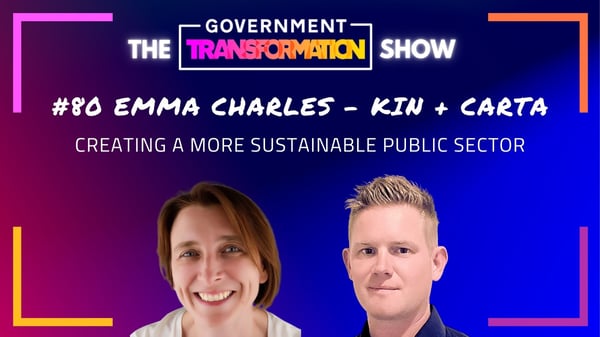Why government transformations stall – and how to course-correct
Government departments across the UK invest significant energy, talent and resources in transformation programmes yet many of these initiatives struggle to achieve their objectives.
The symptoms of stalled or unsuccessful transformations are familiar: inefficiencies remain stubbornly in place, technology solutions fail to gain traction and staff who have seen prior efforts come and go can become sceptical.
The oft quoted statistic, is that 70% of transformations fail. Still, there is every reason to believe that government-led transformations can succeed. The critical question is how to design and implement them in ways that embrace the complexity of our public sector and empower frontline teams to deliver sustainable change.
A Complex Environment
Transforming government is not like turning around a small business or even a large corporation, despite what Elon Musk and Tom Blomfield might have us believe. Public sector leaders face unique pressures: the spotlight of public accountability, scrutiny over every pound spent and a duty to uphold fairness for citizens.
Departmental structures can be intricate and policy considerations may override purely commercial objectives. While frameworks help organise these complexities, they sometimes struggle to account for the cultural and political factors that shape government.
This complexity can cause change programmes to stall or fall short. When efforts fail, it is not always due to a lack of talent or commitment but rather the need for tailored approaches that respect the particular constraints and opportunities within government.
The Hidden Cost of Stalled Initiatives
When a transformation does not deliver its intended outcomes, the consequences extend beyond missed deadlines and budget overruns. Staff morale can take a hit, with staff at all levels developing “change fatigue.”
Confidence in leadership may erode and future projects begin under the shadow of past disappointments. In some cases, essential public services continue to operate below optimal efficiency, affecting citizens who rely on them.
There is also the unavoidable financial cost: unrealised benefits, duplicated spend and underutilised technology. Over time these shortfalls can undermine trust in new ideas among both those delivering the changes and the public who funds them.
Rethinking the Approach
In these circumstances, leaders sometimes question whether continued attempts at reform are worthwhile. Yet public services must keep evolving to meet shifting demands and tighter resources. Perhaps the more constructive question is: how can we approach transformation differently this time?
One answer lies in a more human-centred collaborative model. Rather than imposing a preset framework across all government contexts, it is crucial to craft solutions that directly address an organisation’s unique requirements.
This involves diagnosing what happened in previous initiatives, engaging the staff most affected by them and co-creating a path forward. Transparent communication helps rebuild trust, especially if lessons from the past are acknowledged and used to shape future plans.
Navigating Legacy Technology and Processes
Major transformation programmes often involve technology upgrades, from replacing legacy systems to introducing new digital platforms. However, technology alone rarely solves entrenched inefficiencies.
Success relies on integrating policy objectives, operational processes and cultural change. When staff see how modernised systems simplify their work and how these improvements align with departmental goals, they are more likely to adopt and support them.
Aligning technology with operations also ensures that solutions are not introduced in isolation. By involving technologists, frontline staff, policymakers and department heads in the same discussions, teams can incorporate technology from the outset, reducing rework and friction.
Rebuilding Trust and Momentum
For many government organisations, the biggest barrier to transformation is not a lack of ideas or funding but diminished confidence caused by previous disappointments. Rebuilding trust starts by listening to those closest to the service. Frontline staff often have vital insights into why a prior initiative struggled and these perspectives can guide a more realistic approach.
It is also essential to show visible wins early on. By focusing on smaller goals within a larger transformation journey - perhaps streamlining a complex process or rolling out an accessible digital tool - teams see tangible proof that this time will be different. These early successes help build momentum for tackling more substantial challenges.
The Ceva Perspective
At Ceva Global our mission is to re-energise public sector transformation by emphasising context, collaboration and culture.
We work closely with senior leaders and frontline teams to explore past and present realities - what worked, what did not and why. This engagement leads to targeted interventions that encourage staff involvement from the beginning. Our approach also extends to rebuilding rapport between different layers of government, ensuring new processes and technologies align with real operational needs.
For departments seeking to turn around stalled or lacklustre programmes, a good starting point can be a Transformation Recovery Workshop.
Bringing together a range of stakeholders - those responsible for policy, operations, IT and finance - enables a wide-ranging conversation about missed opportunities. Critically, it provides a forum to develop a shared vision of success that inspires renewed commitment across the organisation.
Looking Ahead
The challenges facing the public sector - budget constraints, shifting policy priorities and increasing citizen expectations - are unlikely to fade. Yet neither are the opportunities to modernise services and deliver stronger outcomes.
True transformation is a collaborative process that depends on close alignment among policymakers, civil service leaders and the people who interact most with citizens.
While there may be no single “silver bullet,” adopting a contextual approach can vastly improve a department’s ability to deliver measurable sustainable change.
By understanding the reasons transformations fail and addressing them directly, we can create programmes that meet operational realities and high public expectations. When done well, transformation does not merely fix problems: it paves the way for a more agile confident future.






